Tawny Port Wines:
Discover their typical aromas and their origin

One of my favorite wine countries is Portugal, for its Port wines, of course, and the other less-known wine styles, their food culture, and amazing people.
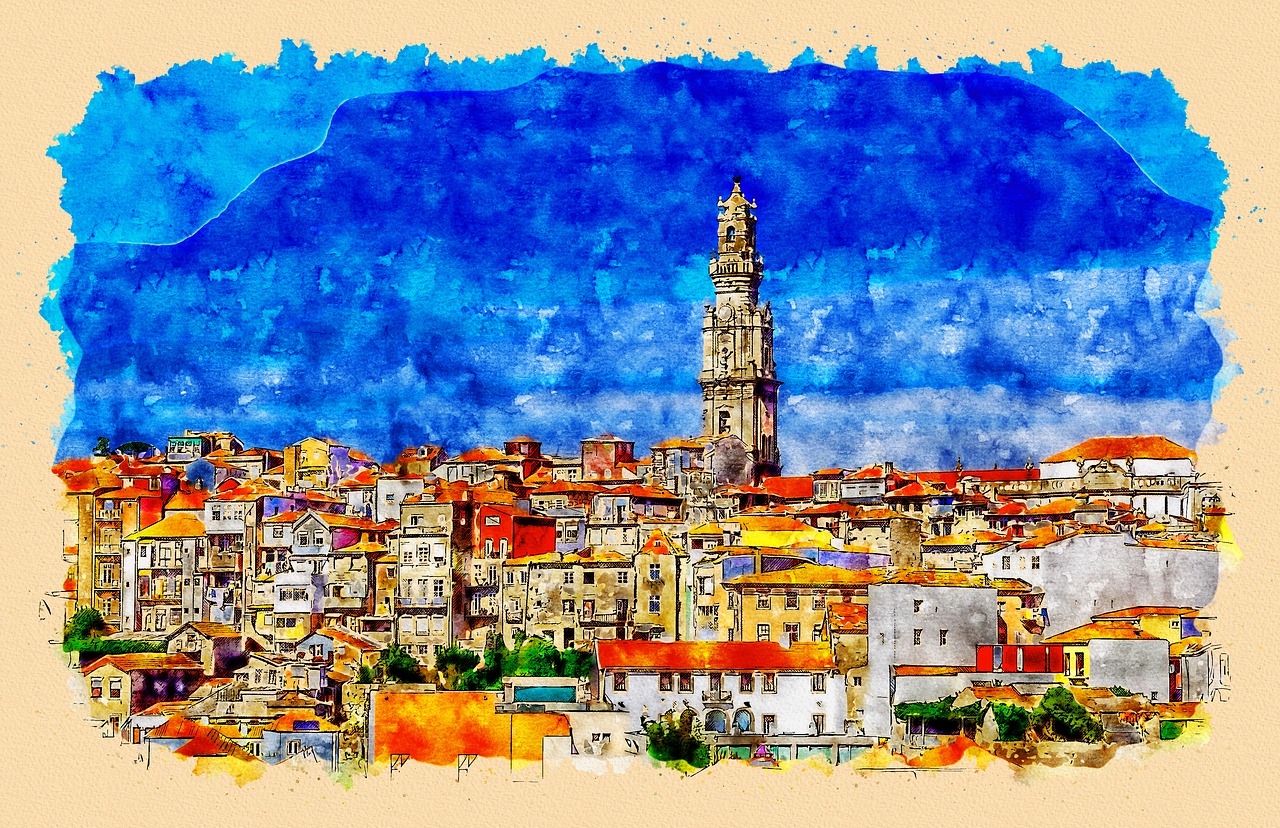 View of OPorto old town - Image by Iceberg 90 from Pixabay
View of OPorto old town - Image by Iceberg 90 from PixabayWines of Porto can express many aromas that evolve during aging over 10, 20, 30, or 40 years. This complexity makes Port wines so interesting for a sensory scientist.
These wines come in different colors and different flavor profiles, these nuances being created by the vineyard environmental conditions (soil and climate), the grape varieties, the winemaking processes, and the wine aging conditions.
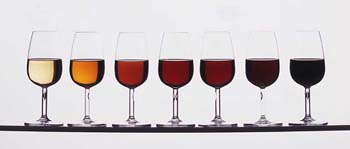 https://www.ivdp.pt/consumidor/dl5xj-colour
https://www.ivdp.pt/consumidor/dl5xj-colourA recent article dedicated to Tawny Port wine aroma grabbed my attention; its scope was to identify its typical aroma to create a Port-like fragrance.
While it might be interesting to think of using a Port wine-like ambient fragrance, I won't cover this topic here. I will focus only on Tawny Port wines' aroma description and give you indications of their origins.
Let's first (re-)acquaint ourselves with Port wines and their characteristics.
How Port wines are made?
As in many European wine regions, Port wine production is highly regulated from the vineyard geographical locations, the grape variety used, the winemaking processes, to the desired taste profile for earning a particular designation.
The Growing Region
The Douro Demarcated Region, where all Port wines are produced, has quite harsh growing conditions: cold in winter and hot during summer.
Fortunately, the six red grape varieties frequently used to make Port wines are adapted to these conditions.
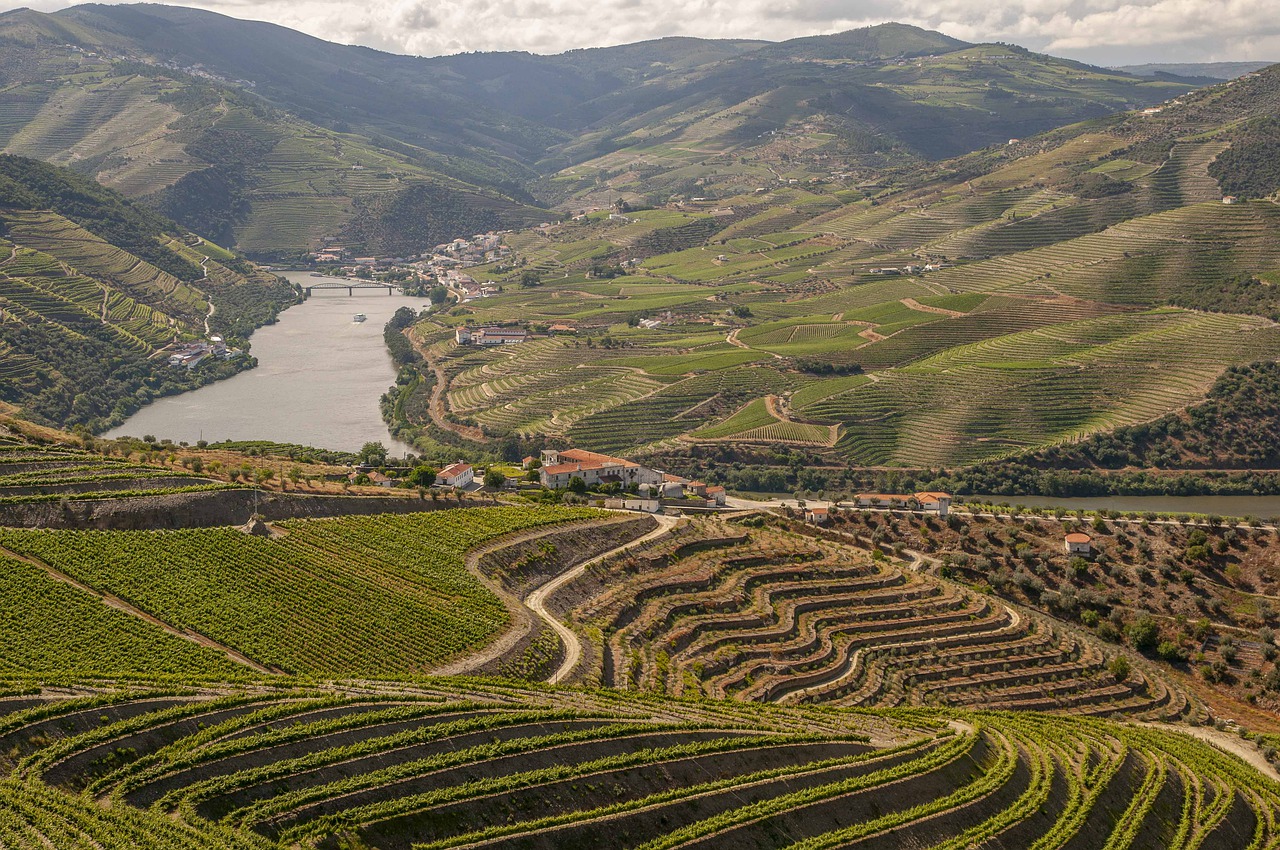 Typical vineyards along the Douro river - Image by Mario Zogheb from Pixabay
Typical vineyards along the Douro river - Image by Mario Zogheb from PixabayTouriga Nacional is a traditional cultivar with low yield. Wines made from Touring Nacional have a deep red color, are quite tannic and therefore astringent, and expressed complex aromas of red fruits, cooked fruits, fresh berries, raisin, and floral notes.
Touriga Franca is a popular cultivar, known for its berry thick skins and difficulty to be crushed. Wines are also intense in red color and expressed red fruits, berries, and floral notes. They can also have a light herbaceous aroma.
Tinta Roriz is a cultivar adapted to hot weather, produces a high yield, and is quite resistant to disease. Its flavor profile is described as similar to Touriga Nacional.
Tinta Barroca is a grape variety adapted to cool weather, produces high yield and a sweet juice.
Tinto Caõ has a long heritage in the region and is also a resilient variety in the Duoro growing conditions. It produces a low yield with sweetness and acidity levels desired for blending with other varietal wines.
Tinta Amarela is a popular grape variety, however sensitive to disease due to its thin skin.
Winemaking
The distinctiveness of Port winemaking from other red winemaking processes is the addition of grape spirit (77% ethanol) to stop the alcoholic fermentation. By doing so, the yeasts stop consuming the residual sugars.
Therefore, this process creates wines with higher residual sweetness and higher alcohol content than red table wines.
After racking and fining, the wines are assessed by a panel of tasters from the Douro and Port Wine Institute (IVDP) to classify them as suitable for a single-year vintage appellation or blending. Blended wines however, must be from the same vintage year.
Wine maturation is the next step in the process and can happen in contact with oxygen or not.
Wines can mature in wood cask or vats for oxidative aging; the wine is exposed to air, which triggers the development of a particular sensory profile. Tawny Port wines age in wood casks, whereas Ruby, LBV, and vintage ports age is large wood vats.
Wines can also mature in dark bottles to induce reducing aging; the wine is not exposed to air, and a different sensory profile develops. This process occurs for vintage wines, LBV, and crusted ports.
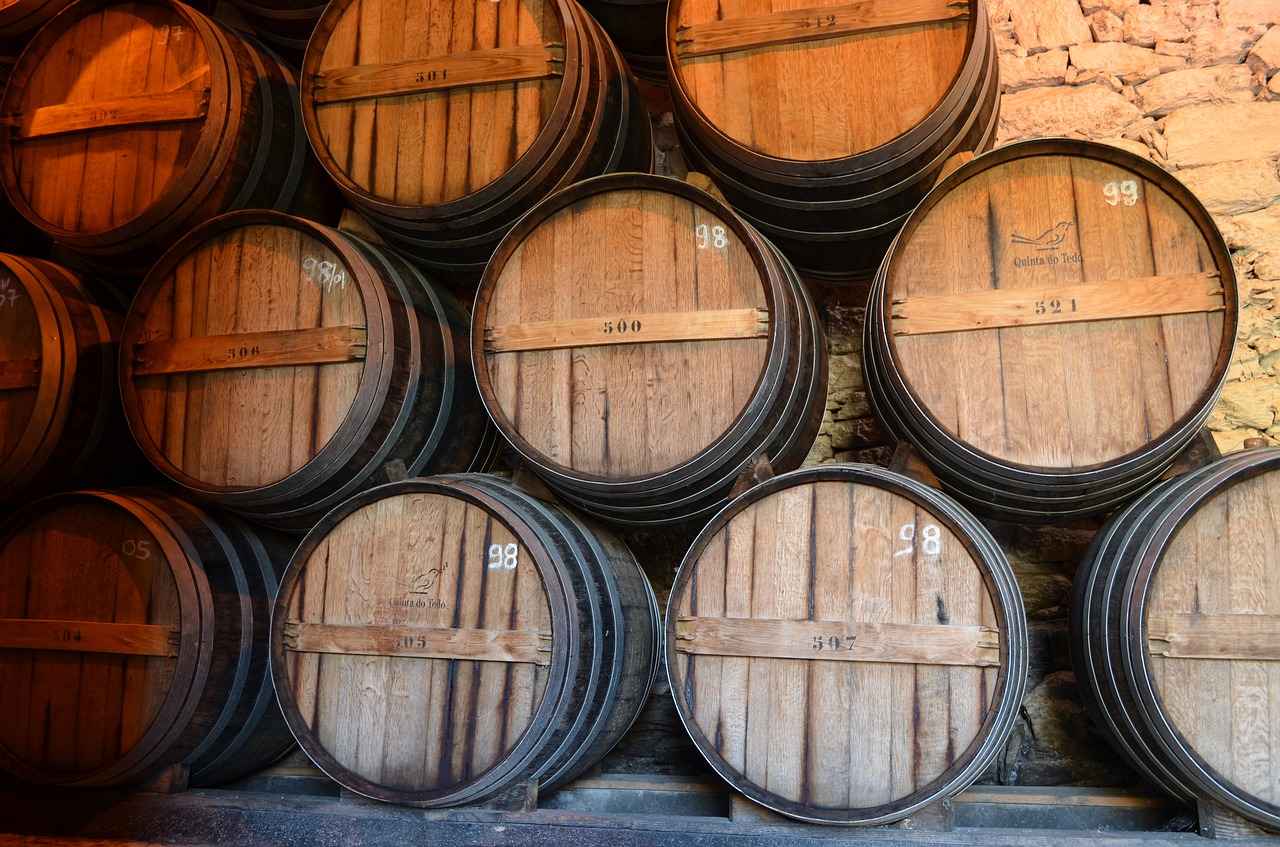 Wood casks - Image by christinak93 from Pixabay
Wood casks - Image by christinak93 from Pixabay
The aromas of Tawny Port Wines and their origins
I mentioned earlier about this research to characterize typical Tawny Port wine aromas [1].
About the research
Twelve members of the local university volunteered to participate in this study. They went through what I would call minimalist training. They spent three two-hour sessions learning to identify wine aromas using a commercial wine aroma kit.
Then, across four different days, the panel evaluated Tawny wines differing in ages and flavor profile complexity, one wine sample per day.
The task of the panelists was simple. Smell each wine sample and describe all the aromas perceived using their own words.
The researchers tallied the descriptor citations and hypothesized that the most frequently cited aromas were Tawny Port wines' typical aroma. While I see some caveats in this approach, the results align with other wine literature findings.
The panel used 23 descriptors grouped by the researchers in seven descriptor categories.
- Alcohol
- Dry Fruits
- Spices
- Wood
- Sweet/Honey
- Floral Dry flowers
- Others
Linking the aroma descriptions to their probable origins
Overall, the aromas perceived by the panel are primarily products of the aging process of the wine. However, the floral notes are typical of the grape varieties used to make the Tawny port wines.
I provide below a plausible explanation of the aroma origins and the chemical compounds associated when known.
Alcohol category
The alcohol sensation comes from the alcohol contained in the wine.
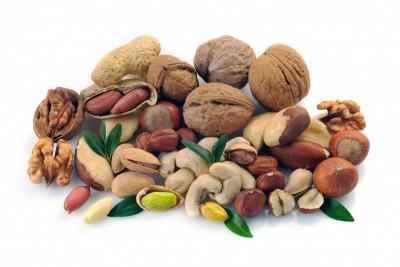
Dry fruit category
It covers dry fruits and nuts and includes Raisins, Plum, Peach, Dry Fig, Roasted Chestnuts, Peanut, Hazelnut, Nut, and Almond.
Raisin and dry fig aromas are the products of oxidative aging in the wood cask or vat.
Dry plum or prune is also a product of aging, and three compounds have been associated with this aroma: γ-nonalactone, b-damascenone, and 3-methyl-2,4-nonanedione
The nutty aromas can be produced during oxidative aging or from the wood. Sotolon is the compound identified as responsible for the nutty character in Port wines. It, however, imparts the curry spice aroma when present as high concentration. Another molecule called benzaldehyde evokes an almond aroma and is a tertiary aroma.
The panel used several nutty descriptors that were likely describing similar sensations. This lack of precision is due to the short training of the tasting panel that didn't allow people to align their descriptions using aroma references as sensory scientists recommend (More on aroma references)

The spice category includes five aromas:
Cinnamon, Cumin, Clove, Vanilla, and Nutmeg
Cinnamon is a fermentation aroma imparted by ethyl cinnamate (also a varietal marker for Pinot Noir). Cinnamon could also be perceived in aged wood wines.
Eugenol and iso-eugenol are the aroma compound responsible for the clove aroma. They are by-products of the oak barrel toasting and developed during aging in the barrel.
cis-oak lactone and vanillin are compounds contributing to vanilla and are extracted from toasted barrels.
Cumin and nutmeg may also come from the wine component's interaction with the oak cask/vat.
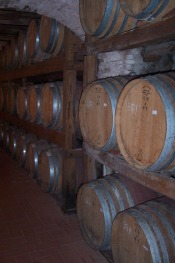
The Wood category only contains the wood attribute, which is not precise enough to understand what the panel detected. Is it the toastiness of the wood or an earthy/musty component?

The Floral category only contains the descriptor floral/dried flowers.
α- and β-ionones and b damascenone are compounds found in grape berries and evoke violet and bergamot-like aromas. Wines made from Touriga Nacional and Touriga Franca varieties are typical of these floral notes.
You may want to practice identifying these aromas next time you taste a glass of
Tawny Port wine.
Learn more about Port wines
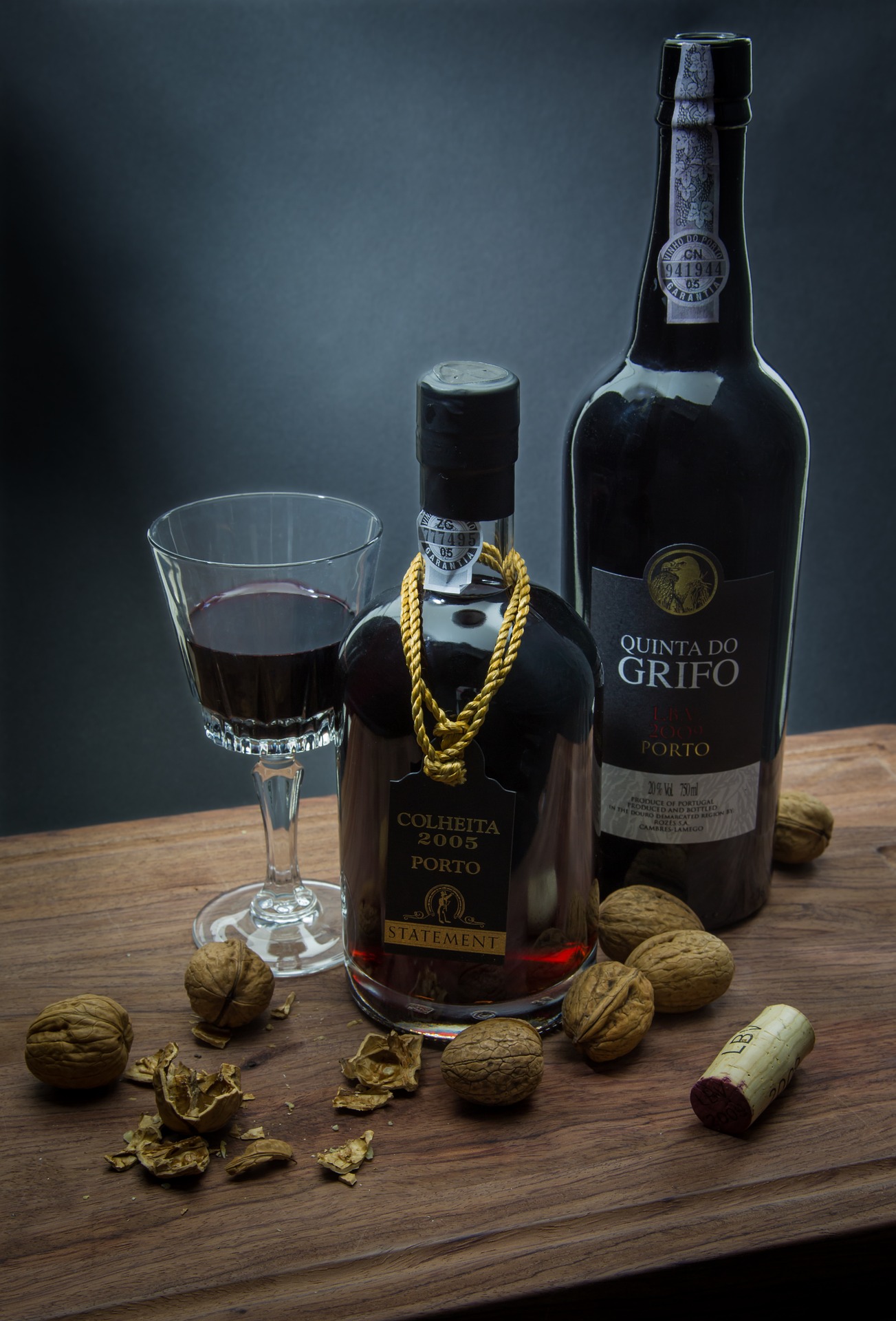
You may consider visiting the World of Wine Museums recently opened in OPorto, Portugal. One of the museums offers an immersive wine experience. LINK
The Douro and Port Wine Institute (IVDP) website offer information to consumers and professionals on the viticulture, winemaking, and tourism related to Port wines. LINK
Finally, this book was recommended to me as a classic to learn all about Port wines by Richard Mayson.
Port and the Douro (Classic Wine Library)References used for this article
[1] Vilela, A.; Ferreira, R.; Nunes, F.; Correia, E. Creation and Acceptability of a Fragrance with a Characteristic Tawny Port Wine-Like Aroma. Foods 2020, 9, 1244.
N. Moreira and P. Guedes de Pinho, Port Wine. In Ronald S. Jackson, editor: Advances in Food and Nutrition Research, Vol. 63, Burlington: Academic Press, 2011, pp. 119-146. ISBN: 978-0-12-384927-4
Published December 17, 2020


New! Comments
Have your say about what you just read! Leave me a comment in the box below.